A new way to master social work
June 4, 2010
Daniela Alvarado has had her sights set on a master’s degree in social work. But she knew she’d first have to quit her job as an intake worker in the county’s Department of Public Social Services to make that happen, a move she couldn’t afford.
Masters programs in social work are notoriously hard for full-time employees since, beyond a challenging course schedule, they demand hundreds of hours of field work.
But thanks to an innovative new partnership between the county’s welfare department and California State University at Northridge, Alvarado can now study and still work.
Starting in August, she will be part of the initial class of 25 Department of Public Social Services staffers starting a three-year master’s of social work curriculum that brings a classroom from Northridge to the department’s headquarters in the City of Industry, 40 miles away.
Even more important than the location, the new program tailors the difficult mix of classes and field work so students can juggle work and school in a hard but manageable six-day-a-week schedule.
“I can’t wait,” says Alvarado, 24, who currently determines eligibility for general relief applicants.
The curriculum and faculty will be identical to the program on CSUN’s campus, except that courses will be held on Saturdays. Meanwhile, the DPSS students will shift to a Monday through Thursday “4-40” schedule to keep Fridays free for field work internships.
The DPSS partnership with CSUN, unanimously approved this week by the Board of Supervisors, is the first time that the college’s social work department has taken a degree program off-campus to a government agency.
DPSS Director Philip Browning pushed for the partnership as a way to raise the department’s professional and educational standards.
“The master’s in social work degree will bring a new level of leadership and skill to the department,” says Browning, who has an MSW, as the degrees are known. “It’s going to be a really rigorous program.”
Currently, Browning says, “virtually none” of the department’s 700 social workers have a master’s in social work.
Browning expects the benefits will be felt first at the department’s In-Home Supportive Services division, which employs most of the social workers to run a state-funded program that provides 185,000 elderly or disabled residents with home-based care.
The new program follows on an earlier partnership, launched in 2006, that teamed DPSS with CSUN to help employees obtain a master’s in public administration. So far, there have been more than 50 MPA graduates.
Like the MPA program, the social worker program is cost free to the county. Students are responsible for tuition, estimated at $29,000 for the three years of study, plus expenses. Students can apply for the department’s tuition reimbursement of $750 per semester and seek financial aid through CSUN.
Already, there is a waiting list of more than 70 applicants. Another class of 25 will begin the application process for entry in the fall of 2011.
CSUN faculty members say they are impressed by the quality of the incoming class of DPSS workers. “The students are mature, diverse and really enthusiastic,” says Amy Levin, chair of the Northridge social work department. “We’re very excited about this program.”
Many of the incoming students are mid-career staffers in their 30s and 40s. The average age is 41, Levin says.
Patrick Muro, 49, is one of the older ones.
For years, he’s wanted to earn a master’s degree in social work, but couldn’t afford to leave a series of DPSS jobs, he most recent as an administrator for the In-Home Supportive Services program in Chatsworth.
“It’s great they are willing to be flexible to help us earn this degree,” say Muro. With six children, he says, he’s grateful for the flexibility.
Posted 6/3/10
A new park gets ready to make a splash [updated]
June 4, 2010
The giant color-coded flow chart and to-do list have come down in the front room of Dawn McDivitt’s La Crescenta home. Her husband’s delighted.
As for all the folks about to have their parking, commuting and coffee-drinking patterns altered by the new Civic Park that McDivitt is planning, let’s just say they may not be singing such a happy tune. When McDivitt’s poster boards come down, that means the heavy machines are about to get to work on a 12-acre park in the heart of the Civic Center.
For downtown employees, patrons of the Music Center, people on jury duty and anyone else who lives, drives or walks in the area, this promises to be a summer to remember.
The $56 million park project is scheduled to come before the Board of Supervisors on June 29. If approved by supervisors and the joint powers authority overseeing the project, construction is expected to get underway in mid-July. That will trigger a series of logistical changes that, at least during the initial weeks, will upend many rituals of daily life in the Civic Center ecosystem.
So McDivitt—a capital projects manager in the county’s Chief Executive Office who’s been heading up the park building effort for the last couple of years—is on a one-woman communications crusade.
“Even if I’m having lunch with a friend who works at the courts, I can say, ‘Do you know about the Civic Park project?’ “ McDivitt says. “People have said to me, ‘Your [business] cards are all over the county.’ “
Which is fine with McDivitt, who’s eager to spread the word about a park that is intended to “remake an often overlooked public space into a spectacular community gathering space that will provide an iconic park for Los Angeles,” according to a February 16 letter to supervisors about the project.
The park will extend from the Music Center to City Hall. Building it means turning what is now the County Mall into a construction zone that will be largely off-limits for the next two years. When finished in June, 2012, the park will provide a long-awaited “sense of place” downtown—not to mention vistas stretching from Grand Avenue straight to City Hall, thanks to the relocation of some county parking ramps.
The park, to be built on the County Mall and the Criminal Courts building parking lot, will have four distinct levels featuring amenities ranging from a community terrace area showcasing plants from around the world to a restored historic Arthur J. Will Memorial fountain, complete with a new wade-able membrane pool. There also will be a performance lawn, a grand event lawn, ADA-accessible walkways, an area for chess players and even a dog run. Sixteen media jacks will make it possible to present, say, an opera on a big screen at the event lawn, or a concert heard by 18,000 people throughout the site.
In preparation for breaking ground on the park, which initially was conceived as part of the now-stalled Grand Avenue Project, McDivitt is holding weekly construction meetings with the builder, developer and representatives of nearby buildings, including the Music Center, where “South Pacific” is playing this summer at the Ahmanson and “The Lieutenant of Inishmore” will be at the Mark Taper Forum. Perhaps the biggest initial impact on Music Center employees will be the loss of their paid monthly parking spots; 300 will be relocating to new spaces during construction.
The Music Center’s chief operating officer, Howard Sherman, says construction-related inconveniences are no big deal.
“It’s a great thing for the Music Center to have this iconic park in our backyard,” he says. “It’s a minor pain for what we’ll be getting.”
McDivitt also has met with representatives of the Colburn School and the Los Angeles Unified School District, whose arts high school is on Grand Avenue, near the park site. And she holds monthly meetings with the parking and building managers of all the structures near the planned park. Through them, she hopes to spread the word about coming changes that will affect their workers.
At the downtown Criminal and Superior courthouses, which flank the new park site, the reality of life in a construction zone is sinking in.
“In both facilities, it’s going to be a significant disruption and inconvenience for everybody, judges and employees,” says Allan Parachini, Superior Court public information officer.
He notes that the Civic Park eventually will be a “great resource” for downtown. But he ticks off a list of difficulties that must be overcome—or tolerated—first. For starters, there will be noise, particularly in judges’ chambers, which will be closer to construction areas than the courtrooms. (McDivitt, who’s held a series of meetings with judges, says heavy duty demolition work will take place on weekends.) With one of the Superior Court’s entrances closed during construction, people entering the courthouse will likely experience more delays at security screening points at the remaining entrances. And the traditional Grand Avenue space for news conferences will be off-limits, as will the parking lot behind the Criminal Courts building where media satellite trucks have descended en masse during big trials.
“The only good part: we do note with gratitude that access to Starbucks will continue,” Parachini says
This Starbucks isn’t just any java joint. Although it’s tucked away and invisible from the street, this is the place that caffeinates much of the downtown bureaucracy, buoys armies of weary jurors and gives lawyers a place to park their overstuffed briefcases.
But it’s located in the County Mall construction zone between Superior Court and the Hall of Administration. So workers at the hall soon will encounter an 8-foot high barricade separating them from their quickest route to Starbucks—a barrier that may prove irritating to those in need of a fast coffee fix. For them, McDivitt has worked out a subterranean route that goes through the lower level of the Hall of Administration parking lot and up to the mall via escalator.
Eventually, the café will relocate to a new, bigger building in the park near the fountain. Putting the store out of commission was not really an option since Starbucks’ contract with the county runs through 2012.
For the public at large, there’s a bigger potential headache looming.
When construction starts, a rerouting of traffic into and out of the Hall of Administration garage by way of the Music Center will send more vehicles southbound on Hill Street and Grand Avenue toward the busy Metro station at 1st and Hill. With lots of pedestrians flocking to the station, traffic could back up.
“That’s what I’m worried about,” McDivitt says. To help ease backups, McDivitt is working with the city Department of Transportation on timing of the traffic signals and, possibly, on prohibiting turns from Hill onto 1st during peak hours.
It seems apt that McDivitt, 52, an L.A. native and lifelong outdoorswoman who loves to fish, drew this particular assignment. She certainly has no fear of challenges; she and her husband are planning to build a fishing lodge/bed and breakfast on land they own in tiny Bamfield, Canada, on Vancouver Island.
McDivitt’s boss, Jan Takata, says she has a “rare combination” of qualities that made her right for the job—lots of experience handling high-profile, complex projects and an understanding of finance. An added plus was that she was already working on the Grand Avenue Plan, of which the park is an offshoot.
“She’s terrific,” Takata says.
So far, McDivitt has been too busy to imagine exactly how she—a 20-year county employee—might take advantage of a new urban park that soon will take shape right outside her doorstep.
“I haven’t even thought of that,” she says. “I just want to get the shovel in the ground.”
To that end, she’s had to occupy herself mostly with what might go wrong—from traffic concerns to possible water issues in the garage.
“Part of my job is to anticipate,” she says. “For me, it’s, ‘What’s the worst case scenario?’ I’ve got to think of those things so we can prepare for it.”
For all her attention to detail, though, McDivitt doesn’t want anyone to get the wrong idea about the proliferation of poster board at her home during the project’s early days.
“It only took over the front room,” she says. “Just one wall.”
Posted 6-04-10
Updated 7/8/10: A groundbreaking for the project is scheduled for Thursday, July 15. The public is welcome; the invitation is here.
How to get your green on in Calabasas
June 4, 2010
 Now there’s a new reason to stop in at the county’s One-Stop Center in Calabasas. A self-serve environmental information center—featuring a wealth of literature on going-green programs—is now in place and growing. Eventually, the center will be an outpost of the L.A. County Energy Program, where residents will be able to access the department’s comprehensive website, call a toll free number to get answers from a live person and make an appointment to get onsite assistance in evaluating contractor bids or filling out papers for a county clean energy retrofit loan. The energy program expects to be making such loans by the end of the summer; those who want updates on the program can sign up here.
Now there’s a new reason to stop in at the county’s One-Stop Center in Calabasas. A self-serve environmental information center—featuring a wealth of literature on going-green programs—is now in place and growing. Eventually, the center will be an outpost of the L.A. County Energy Program, where residents will be able to access the department’s comprehensive website, call a toll free number to get answers from a live person and make an appointment to get onsite assistance in evaluating contractor bids or filling out papers for a county clean energy retrofit loan. The energy program expects to be making such loans by the end of the summer; those who want updates on the program can sign up here.
For now, the center, located at 26600 Agoura Road, Calabasas, has brochures on topics ranging from how to apply for home energy rebates to how to dispose of toxics safely.
Boycott measure takes aim at Arizona law [updated]
June 1, 2010
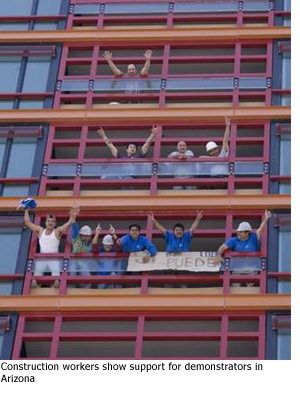 A sharply divided Board of Supervisors on Tuesday approved a Los Angeles County boycott of Arizona—potentially halting millions of dollars in contracts and investments to protest the state’s controversial new illegal immigration law.
A sharply divided Board of Supervisors on Tuesday approved a Los Angeles County boycott of Arizona—potentially halting millions of dollars in contracts and investments to protest the state’s controversial new illegal immigration law.
The Arizona law, which requires law enforcement officers to check the immigration status of those they suspect are in the country illegally, has become an international lightning rod. Tuesday’s vote turned the Hall of Administration meeting room into a forum for the array of divergent viewpoints that have sprung up since it was signed into law.
That was clear when, moments after the vote, one section of the audience chanted “yes we can,” while another shouted “shame on you.”
The board’s 3-2 vote was based on a motion by Supervisors Gloria Molina and Zev Yaroslavsky, who expressed concerns that the Arizona law, set to take effect next month, will lead to “widespread racial profiling and will subject many ‘foreign-looking’ persons and persons of color—including countless U.S. citizens, legal residents, visiting business persons and tourists—to unlawful interrogations, searches, seizures and arrests.”
During their remarks before the vote, Molina and Yaroslavsky both said they conceivably could find themselves unjustly placed under scrutiny in Arizona.
“You only have to look at me to know that I’m one of those individuals who would have a heck of a tough time in Arizona,” Molina said.
Yaroslavsky argued that anyone whose name sounds foreign, like his, or has an accent, could “be ripe for questioning” if they’re pulled over in the desert, forced to provide a birth certificate or passport to prove their citizenship. “That’s nonsense,” he said. “That’s unconstitutional.”
Joining Yaroslavsky and Molina in approving the motion was Supervisor Mark Ridley-Thomas, who did not discuss his views on Arizona’s law or on the merits of the board’s action. Rather, he said simply he’d let his vote speak for itself. Later, in a press release he said he voted for the boycott to help “bring an end to this civil rights crisis and restore fairness under the law.”
Voting against the measure were Supervisors Don Knabe and Michael D. Antonovich, who last week called the proposed boycott “stupid.” On Tuesday, Antonovich argued that Arizona was forced into action because the federal government had failed to enforce the nation’s immigration laws. “The state of Arizona has said out loud: the emperor has no clothes,” Antonovich said.
Knabe, meanwhile, criticized his colleagues for spending time on an issue that, he said, was irrelevant to the needs of L.A. county residents.
The measure instructs staff to report back in two weeks on how—and how soon—the county might legally end its contracts with Arizona companies without harming the county’s interests. It orders a similar review of investments in Arizona securities held by the county and by the Los Angeles County Employees Retirement Association (LACERA.)
A preliminary study by the Auditor Controller’s Office indicates that Los Angeles County agencies have spent $121.3 million over the past five years on goods and services from companies with Arizona addresses. The contracts range in size from a few hundred dollars to many millions, providing the county with everything from Taser guns to landscaping products to waste hauling.
The extent of county contracts in Arizona—including whether the companies are truly based in that state—is still being researched, with a final tally yet to come.
Among the largest expenditures was the nearly $14.8 million paid to Tucson-based Sunquest Information Systems since fiscal 2005. “We do value the business we do in Los Angeles County and we want to continue to do business with our partners in the county,” Kelly Feist, vice president of marketing for the laboratory testing and technology company, said Tuesday.
Feist added that while the company is based in Arizona, it also has offices in North Carolina, England and India. “Most of our employees reside outside of the state of Arizona,” she said.
As for investments, the county holds no stock in Arizona-based companies or in Arizona state or municipal bonds, said Doug Baron, a division chief for the Treasurer Tax Collector, a department that oversees the county’s $25 billion investment portfolio. Baron said the county portfolio does contain “commercial paper”—short term money-market notes issued by banks and corporations—issued by companies that do business in Arizona. It may also hold commercial paper on Arizona-based companies, Baron said Tuesday.
Under the measure, county travel to Arizona also will be suspended unless the trip would “seriously harm the county’s interests,” and directs departments whenever possible to refrain from entering into new contracts with businesses in the state as long as the law is in effect.
In addition to putting a financial squeeze on Arizona, the boycott measure seeks to exert political and legal pressure. It instructs the county’s Chief Executive Officer to send a letter to elected officials in Arizona opposing the law and directs the County Counsel to file a brief in U.S. District Court supporting litigation that challenges the law’s constitutionality.
In addition, it directs the county’s federal legislative advocates to lobby against the use of federal funds to support implementation of the Arizona law.
The supervisors’ action comes after the Los Angeles City Council last month banned most city travel to Arizona and future contracts with firms located in the state. The city’s partial boycott did not, however, cancel all of the city’s contracts with Arizona companies.
The vote came after a parade of speakers testified on both sides of the issue, prompting some vocal responses from the small but engaged audience. Molina, the board’s chair, repeatedly admonished the audience to stop interrupting the speakers.
Those testifying Tuesday ranged from Sheriff Lee Baca (who opposes the Arizona law) to the family of Jamiel Shaw Jr., killed in 2008 by an illegal immigrant gang member, who told the board they support the Arizona law and oppose L.A. County’s boycott.
Posted 6/1/10
Updated 6/18/10
Implementing the first stage of L.A. County’s economic boycott of Arizona, Chief Executive Officer William T Fujioka has directed departments to end travel to the state, unless approved by his office, and to avoid entering into new contracts or amending existing ones with Arizona-based contractors.
In the directive, Fujioka says the county is readying a final list of current contracts with Arizona firms as a step toward determining which of them may be legally terminated without causing the county undue harm.
Alice Project takes a new trip to Wonderland
May 27, 2010
 His colleagues at Oxford knew him as the Rev. Charles Dodgson, a painfully shy mathematics professor and logician with a stammer and a penchant for photography, chiefly portraits of little girls. But the world knew him as Lewis Carroll, the brilliant fantasist who created “Alice in Wonderland” and “Through the Looking Glass,” immortal works of children’s literature that have been adapted in various forms thousands of times the world over since their first print publications in 1865 and 1871.
His colleagues at Oxford knew him as the Rev. Charles Dodgson, a painfully shy mathematics professor and logician with a stammer and a penchant for photography, chiefly portraits of little girls. But the world knew him as Lewis Carroll, the brilliant fantasist who created “Alice in Wonderland” and “Through the Looking Glass,” immortal works of children’s literature that have been adapted in various forms thousands of times the world over since their first print publications in 1865 and 1871.
Hard on the heels of director Tim Burton’s latest cinematic version, the downtown-based Vesper Theatre Company on Friday, May 28, begins performances of “The Alice Project: An Original Wonderland Experience.” Call it an urban update of Carroll’s classic fable, casting Alice as a saucy waitress and aspiring artist struggling to reconcile her creative ambitions with the mundane demands of paying the rent and earning a living. Playgoers participate through a series of Wonderland-themed rooms and spaces, decorated with original art and populated by performers like a street magician – not traditional theatre “in the round,” but theatre “all around.” Warning: not for very young children – this visit to Wonderland may be a little too rugged for them.
The Alice Project Warehouse is located where Banning St. and Center St. meet at 120 N. Santa Fe Ave. in downtown Los Angeles. Doors open at 7:30 p.m. for an 8:00 p.m. curtain. See Vesper Theatre tickets for dates, prices and ordering, or call the theater at (213) 260-1613 for further information. The show runs through June 27.
Decisions, decisions: a guide for the perplexed voter
May 27, 2010
The June 8 California primary election is just around the corner. With literally dozens of decisions to make on state and local legislative and judicial candidates—not to mention various ballot measures—we thought a little help was in order.
Here are some non-partisan and official government sites that can offer guidance.
L.A. County Bar Judicial Elections Page: A detailed resource guide to the County Bar Association’s judicial ratings, with links to an assortment of other authoritative sources.
League of Women Voters SmartVoter Web Page for L.A. County: For decades the League of Women Voters has been the go-to place for fair, independent and informed analysis of often complex and confusing initiatives and other ballot proposals.
Secretary of State Voter Information Guide: The online version of the official State of California handbook for statewide candidates and state ballot measures.
LAVote: (County site) The LA County Registrar-Recorder’s site for locating your local polling place and looking up your individualized sample ballot, which in addition to the candidates and ballot measures includes candidate qualifications and pro and con local ballot arguments.
Posted 5/27/10
Maestro on a mission
May 27, 2010
A few years ago, a former LAPD commander I knew from my days on the City Council wrote me an interesting letter. It wasn’t about the latest crime-fighting or community policing strategies—at least not in the usual sense of those terms. Instead, he wrote to urge me to keep pushing for musical education and expanded access to classical music in our county. His reason? “I never arrested a youngster who played a musical instrument.”
I viscerally understood what he meant. As a youngster, I was what we call today a “latchkey child.” My mother died when I was 10, and my dad worked afternoons and evenings. Fortunately, in those days we still had musical education in our public schools. When I entered Bancroft Jr. High School in Hollywood, I joined the “Beginning Woodwinds” class and was assigned the oboe, one of the most difficult instruments in the orchestra. For three years I religiously rehearsed at school and practiced at home.
That oboe was a loaner, but I got to keep something important: an unforgettable educational experience that not only broadened my cultural horizons but also, as I now realize, kept me out of trouble.
All of this came back to me on Saturday afternoon, when I went to the Walt Disney Concert Hall to watch Gustavo Dudamel conduct Youth Orchestra Los Angeles (YOLA). This is a music education program undertaken by the Los Angeles Philharmonic and inspired by Venezuela’s legendary El Sistema, which produced Dudamel.
El Sistema–created in 1975 by the visionary Dr. Jose Antonio Abreu, who still oversees it–has placed musical instruments in the hands of hundreds of thousands of Venezuelan youth and created orchestras in all of the country’s major cities, and many of the smaller ones as well. It’s more than a musical exercise; it’s an incredibly powerful social program with an international message that’s going viral. The best of the El Sistema musicians make up the internationally acclaimed Simon Bolivar Orchestra, which tours the world and last year thrilled Los Angeles audiences at Disney Hall.
Now, with Dudamel as the Philharmonic’s Music Director, the El Sistema-style program started here in 2007 is on the verge of great things. YOLA now has 300 participants who observe a rigorous practice and rehearsal schedule after school. While the program here was intentionally started slowly, its growth is imminent and inevitable.
I first heard the orchestra last summer, and while they struggled with the music, you had to love the kids and their enthusiasm. They’ve come a long way since then. These kids have already played the Hollywood Bowl, and can now they can say that they’ve made it to Disney Hall, too.
The orchestra members–a sea of red, yellow, green, purple and blue T-shirts—took their places Saturday on the internationally-famed stage before an audience of about 1,000 family, friends and orchestra supporters. Their rehearsal with Dudamel was the closing event in a three-day symposium called “Composing Change: YOLA and the El Sistema Movement.”
Even playing hurt, having pulled a neck muscle earlier in the week, Dudamel exuded an infectious warmth and humor from the moment he stepped onstage. He started out by not just shaking the hand of the young concertmaster, but also patting his head.
Their first piece of business—going over a difficult minor key march from Mahler’s First Symphony—gave way to an enthusiastic rendition of the main theme from “Star Wars” and, finally, to a fun and rousing reading of “Chamambo.”
It was an unforgettable hour for these kids, who represent every ethnic and racial group in L.A. Every hour they spend practicing, they learn the value of hard work and team work. What a life lesson: that by working together and subordinating their own urges, they can produce great music. (Some of our political leaders could stand to learn that lesson, too.) And, from the social policy point of view, every hour the kids spend with the orchestra or practicing at home is an hour they are not susceptible to the vicissitudes of growing up in today’s urban America.
YOLA is just getting started. It’s no El Sistema—yet–but the journey has begun. Dudamel closed the rehearsal by praising the kids for “giving the message and music of our people and our continent. How? Because they have an instrument in their hands.”
And that’s worth a round of applause from all of us in Los Angeles.
For more on YOLA, check out the Philharmonic’s website, and read our earlier story about the orchestra here.
Here’s a video look at Youth Orchestra Los Angeles:
http://www.hollywoodbowl.com/media/video/flv/yola_103.flv
Posted 5-10-10
Helping veterans, one berry at a time
May 27, 2010
Strawberry Flag is a living work of art. It’s also a social experiment, an adventure in aquaponic gardening, a village green, a place to ride a power-generating exercise bike, to silkscreen a T-shirt, to sample a raw food lunch—or to simply sit in a tent, sipping tea while nibbling an old-fashioned biscuit with hand-crafted jam.
Most powerfully of all, it’s a place where human beings are finding that great sustenance comes in small berries.
“To get to dig in the ground for me is a pleasure. To be close to the ground—to me, that’s close to God,” says Bobby Shelton, 75, an Army veteran who served in the Korean War and now is seeing action on the front lines of Strawberry Flag.
The experimental art installation on the grounds of the Veterans Administration campus in West Los Angeles is the brainchild of artist Lauren Bon, who, together with Dr. Jonathan Sherin of the VA, saw the possibility of creating a grand and evolving work on the site. The project is being funded by the Annenberg Foundation, by way of Bon’s Metabolic Studio.
Nestled on an all-but-forgotten quad on the VA grounds, the flag is made up of seven “stripes” of strawberries. The berries were rescued from an abandoned field in Rosemead and are now growing in pots set into white piping. Recycled and filtered L.A. River water pumps through the pipes, powered by a row of stationary bikes hooked up to batteries. At the top of the installation, light pours through cut-out stars onto a blue field, creating a restful shaded area.
Shelton’s specialty is tending to the ailing plants in the strawberry nursery. He’s got a life-giving touch; a thriving vegetable garden near the strawberries is a point of pride.
“It’s a wonderful project,” says Shelton, who takes the bus from his home near Inglewood to work at the flag six days a week. “I’ll be riding back and forth, telling people about it.”
Shelton does his job as part of the VA’s “compensated work therapy” program. So does Mel Williams, 59, an Air Force veteran who’s in charge of the onsite “vermiculture”—the process of using worms and their waste to create a compost tea that helps plants grow.
Williams has a two-hour commute to work each way from San Pedro, but you won’t hear any complaints.
 “I love this,” he says. “I’m being enriched with a lot of things here. I wake up and look forward to it…It gives me time to ponder what’s next.”
“I love this,” he says. “I’m being enriched with a lot of things here. I wake up and look forward to it…It gives me time to ponder what’s next.”
Bon, who lives in Topanga Canyon, said she was moved to create Strawberry Flag after the election of Barack Obama created an “imperative for the rest of us to rise to the occasion.”
“It makes sense to redefine what it means to be a patriot,” she says, “by growing a strawberry flag in the midst of under purposed buildings in the center of historic West Los Angeles.”
The artist, granddaughter of Walter Annenberg and a trustee of the Annenberg Foundation, is known for other works including Not A Cornfield near Chinatown in downtown L.A., in which she transformed an “industrial brownfield” into a cornfield. She’s also currently at work on a film project about the Owens Valley called “Silver and Water.”
Her land-use agreement with the VA ends in September. But she hopes to see some kind of continuing presence on the site that will keep the spirit of Strawberry Flag alive after she leaves.
Since it started last June, the project has grown quickly and organically.
There’s a Strawberry Flag Internet radio station, with programs put together in the gleaming Airstream trailer (also reclaimed and recycled) that serves as an on-site office. (A neon sign on the side of the trailer reads: GRAB A MOP.) A monthly newspaper, the Strawberry Gazette, is about to come out with its fourth issue. Strawberry Flag’s YouTube channel features a video chronicle of the project’s evolution.
The nearby VA buildings are being touched by the project’s vitality, too.
“It was a very different place when we came here last year,” says Rochelle Fabb, the project manager. “It was like a cemetery.”
One of the buildings now houses the project’s light-filled and inviting kitchen space. It’s where vets like Ruth Harris, Gregory Gauthier and Julio Espino work with newly-hired chef Gabriella Salamon, a raw food and healthy eating specialist, to learn the ins and outs of working with food grown on the site.
On Tuesdays, the kitchen serves up a healthy lunch after a “boot camp” workout on the stationary bikes. Wednesday afternoons are devoted to “jam sessions”—turning the strawberries and other fruits into preserves that are now proudly arrayed on shelves in the kitchen. Tea is served weekdays at 3 p.m., with a special High Tea offered once a month. (The next one is scheduled for 4 p.m. on June 10. Check Strawberry Flag’s Facebook page to RSVP.)
 In another nearby building, Larry Flaherty and Ray Rodgers preside over the print studio. Lining the table are vibrant silkscreen patterns that were transferred to T-shirts during a workshop. The studio also offers sessions in print-making and landscape painting to veterans, many of them first-time artists.
In another nearby building, Larry Flaherty and Ray Rodgers preside over the print studio. Lining the table are vibrant silkscreen patterns that were transferred to T-shirts during a workshop. The studio also offers sessions in print-making and landscape painting to veterans, many of them first-time artists.
“I thought it was magic when I saw what they could do with colors,” Flaherty says.
Rodgers points to their program’s “therapeutic value.” “I personally have gained people skills,” he says.
While Strawberry Flag is intended primarily for vets, it’s also open to the public, who are welcome to take part in any of the activities. (A map is here.)
On Monday, a Memorial Day drum circle is scheduled at the site from 7 p.m. to 8 p.m. to remember those who have served.
“If you have a drum, bring it,” Fabb says. If not, “we’ll have plenty of things here to bang.”
Sherin, the chief of mental health at the West Los Angeles VA campus who helped come up with the concept with “fellow Topangan” Bon, sees in Strawberry Flag a powerful metaphor for the veterans under his care.
“Strawberry plants provided a service. They were pulled out of the ground, retrieved and brought to this healing ground…The whole time this is happening, the veterans are doing the exact same thing—literally. Tending to [the strawberries] is quite a therapeutic experience.”
He, too, hopes that Strawberry Flag can live on in some form.
“”Innovative projects that engage the vets and involve a VA-community partnership are absolutely the wave of the future,” Sherin says. “I feel that our facility can capitalize on the innovative model, the raw energy at the ground level, and can continue along these lines with a project that continues many of these things in an enduring manner.”
For now, the flag is an attraction—and a curiosity—for many of those making their way around the sprawling VA grounds. And for those who work there, it’s an ongoing passion and commitment to a rich circle of interconnected lives.
“It’s about the strawberries,” says Williams, as he tends the worms that nourish the crop that makes the jam they serve to his fellow veterans at teatime. “We have to keep the strawberries healthy.”
Posted 5/27/10
More L.A. beaches acing their tests
May 27, 2010
The grades are in, and water quality at Los Angeles County beaches improved significantly last year, according to environmental watchdog Heal the Bay’s statewide 2009-10 Beach Report Card.
 The latest report, released this week, gives 79 percent of the county’s beaches an A or B grade during the dry-weather summer season, up significantly from last year’s 70 percent and from the six-year average of 73 percent. The report uses a complex scorecard based on weekly measurements of bacterial pollution between March 2009 and April 2010 at 326 California beaches, including 86 in L.A. County.
The latest report, released this week, gives 79 percent of the county’s beaches an A or B grade during the dry-weather summer season, up significantly from last year’s 70 percent and from the six-year average of 73 percent. The report uses a complex scorecard based on weekly measurements of bacterial pollution between March 2009 and April 2010 at 326 California beaches, including 86 in L.A. County.
Heal the Bay President Mark Gold says the improved grades are the result of efforts to clean up water runoff from streams and storm drains. “These pollution cleanup projects are beginning to pay dividends,” he said.
Failing grades at two troubled Malibu beaches last year jumped to B’s this time, thanks to recently-installed cleanup systems. A county Department of Public Works project at Marie Canyon launched in late 2007 zaps bacteria-tainted water with ultra-violet radiation before returning it to the creek that empties into the ocean at Puerco Beach. At Paradise Cove, the cleaner flows correspond with the completion of new privately-owned sewer and waste water treatment systems.
Despite the good news, Los Angeles County’s overall water quality remains the worst in California. Seven local beaches earned an F in year-round testing—down from 15 last year, but still troubling, Gold said.
Five local beaches made the group’s “Beach Bummers” list of the worst summer-season spots. The bummers include beaches at Avalon Harbor Beach on Catalina; Cabrillo Beach in San Pedro; Santa Monica Pier; Colorado Lagoon in Long Beach; and Sunset Boulevard and Pacific Coast Highway in Pacific Palisades.
Even with cleaner beaches, Gold counsels swimmers to stay out of water near creek mouths or storm drains. “If it’s an open-ocean beach, it’s a clean beach,” Gold said.
For Heal the Bay’s press release on L.A. region beaches, click here.
Posted 5/27/10




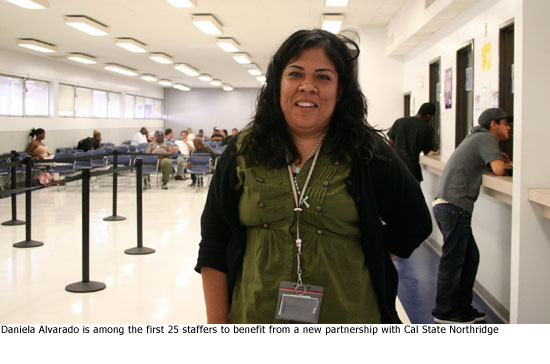
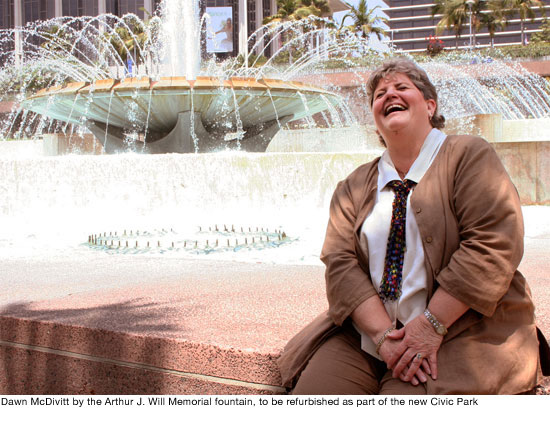
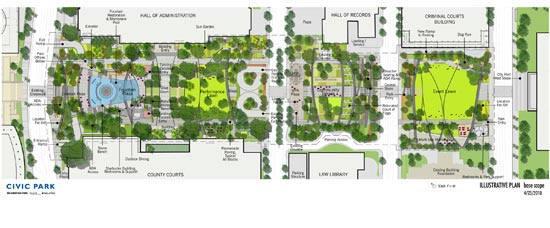
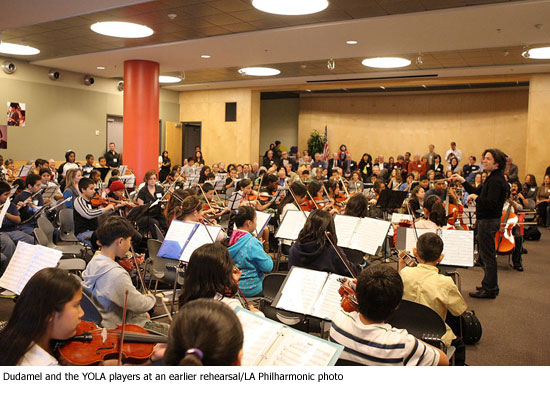
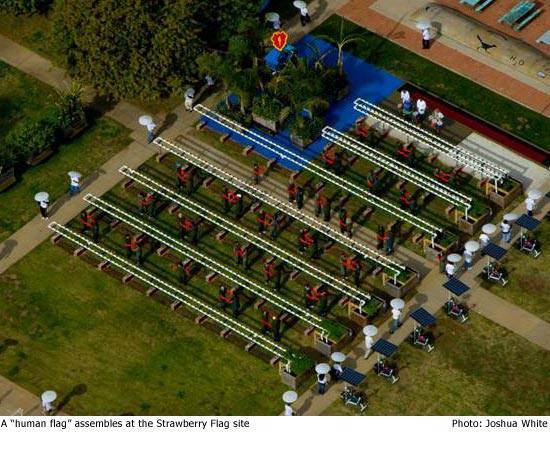








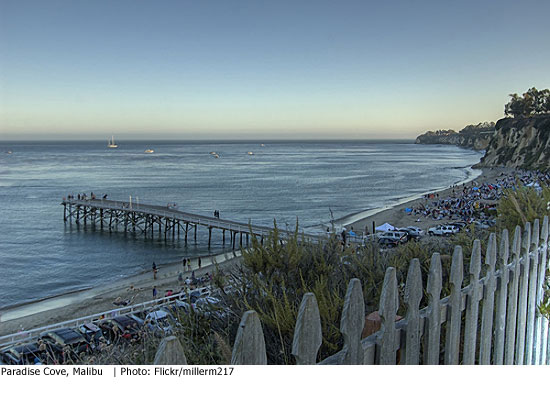





 Check for the latest closure information
Check for the latest closure information








